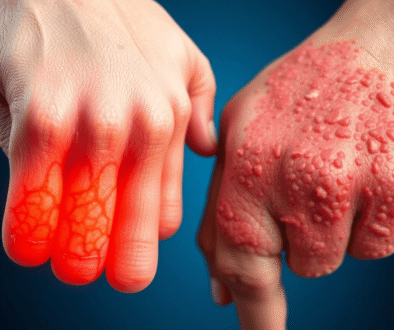Signs of Diabetes: What to Watch For and When to See a Doctor
We all know someone who’s been caught off guard by diabetes. The trouble is, many people miss the signs until things get serious. Sometimes these signs feel small—extra thirst, blurry eyes, a dry mouth you can’t shake. Other times, it’s weight loss you didn’t plan or cuts that heal too slow.
Spotting diabetes early can save lives and prevent years of health issues. This guide is for anyone curious about these warning signs—from folks at risk to loved ones hoping to help. By knowing what to watch for, we can take action and protect our health before problems take off.
Common Signs of Diabetes Everyone Should Watch For
Catching early signs of diabetes can keep us from bigger health problems. Some symptoms sneak up quietly and often seem unrelated. By learning the signals our bodies send, we give ourselves a better shot at staying healthy.
Frequent Urination (Polyuria)
When blood sugar gets too high, the kidneys scramble to clear the extra sugar from our blood. This means they pull water from the rest of our body and send it out as urine. We might notice ourselves making more trips to the bathroom, both day and night.
Imagine sitting through a meeting or a long movie and feeling that urge to go—over and over again. Some people wake up several times every night, making restful sleep hard. This isn’t just annoying; it can leave us tired and make daily life tough. To read more about why this happens, check out this article on frequent urination and diabetes.
 Photo by Nataliya Vaitkevich
Photo by Nataliya Vaitkevich
Excessive Thirst (Polydipsia)
All that extra urination means our body loses a lot of water fast. To make up for it, we often feel thirsty all the time—even after just finishing a glass of water. This thirst isn’t quenched by the usual drinks.
Think about walking through your day with a dry mouth, feeling like you need to bring a water bottle everywhere. That’s not just an annoyance—it’s our body calling for help. Polydipsia is often an early red flag of diabetes many people miss.
Unexplained Weight Loss
Our bodies use glucose, or sugar, from food for energy. With diabetes, that sugar stays locked in the blood and can’t get into the cells. The body starts burning fat and muscle instead.
This leads to weight dropping off—sometimes fast, sometimes slow—without any changes in diet or exercise. We might notice pants fitting looser or the numbers on the scale falling when we haven’t tried. This kind of weight loss is a cause to pay attention to, especially when it comes with other signs above.
Blurred Vision
Water follows sugar. When our blood has too much sugar, some of that extra fluid can get pulled into the lenses of our eyes. This can cause swelling and changes in shape, which blurs the vision.
Waking up and realizing the world seems fuzzy—or noticing street signs or book pages aren’t clear—can be one of the first things we experience. Often it comes and goes, which makes it even easier to brush off. More on fluctuating vision can be found at Blurred Vision: Symptoms, Causes & Treatments.
Extreme Tiredness and Fatigue
Even though we eat, our cells can’t use that food for energy since the sugar can’t move from our blood into our cells. It’s a lot like putting gas in a car but having a broken fuel line—the tank is full but the engine doesn’t get what it needs. This leaves us feeling worn out or heavy, no matter how much we rest.
Daily tasks start to feel like chores. Walking up stairs, picking up groceries, or even focusing at work can seem twice as hard. Diabetes fatigue is a very real effect, as explained in Diabetes Fatigue: Causes, Management, and More.
Less Obvious and Silent Signs of Diabetes
While most of us recognize thirst and tiredness as red flags, diabetes can sneak up with quieter signs. Some symptoms feel easy to ignore or blame on a busy life. Yet, they can spell real trouble for long-term health. Let’s look at the subtle ways our bodies send us warning signals when sugar levels run too high.
Slow-Healing Cuts and Wounds
Our bodies rely on steady blood flow for repairs. High blood sugar gets in the way. Cuts, scrapes, or small wounds may linger and take much longer to scab over or close up. That’s because sugar in the blood can slow down the cells that fix wounds. On top of that, less blood reaches our skin when blood vessels are stiff or inflamed.
This broken system does more than make a scrape last. It increases the odds of infections. Bacteria find it easier to slip into delayed-healing skin. People with diabetes face a higher risk of skin and even bone infections from injuries that should have been minor. For more on how diabetes affects wound healing, read this helpful guide on silent symptoms of diabetes.
Frequent Infections and Yeast Overgrowth
High blood sugar is sweet news for germs. Bacteria and yeast eat up the extra sugar in warm, damp spots on skin, in the mouth, or in the bladder. That’s why we might notice more skin infections, mouth sores, or cases of thrush (oral yeast infection). Women may find more frequent vaginal yeast infections. Men may notice itchy rashes or redness in places where skin rubs together.
Even mild infections can become frequent, stubborn, or hard to treat. If our skin suddenly feels itchy or we’re fighting off the same problem over and over, it is our body’s quiet alert that blood sugar may be running high. See more details on unusual symptoms like recurring infections and diabetes.
Numbness or Tingling in Hands and Feet
High blood sugar wears down nerves over time. This damage, known as neuropathy, steals away healthy feeling in our toes, feet, or fingertips. It can feel like pins and needles, burning, zapping, or numb patches. Sometimes, we wake up and find that our feet have “fallen asleep” for no reason.
Think about tying your shoes and not quite feeling the laces. Or, walking barefoot and missing the soft tickle of carpet. If left unchecked, this numbness can grow, raising the risk of unnoticed injuries. Everyday moments turn risky when we can’t trust our sense of touch. Find out why these silent symptoms matter in our guide to pins and needles and other diabetes signs.
Dark Skin Patches (Acanthosis Nigricans)
Ever spot a patch of skin that looks darker, thicker, or feels velvety? This is called acanthosis nigricans. It most often shows up on the back of the neck, in the armpits, under the breasts, or in the groin. The area may feel a bit rough or look odd compared to the surrounding skin.
These changes are not from dirt. They’re our skin reacting to too much insulin. When the body has to make more insulin to handle high sugar, skin cells grow faster in certain spots and leave behind these dark marks. Finding a new patch like this is a sign the body is struggling with insulin resistance—a core problem in type 2 diabetes. For a full explanation of dark patches and other subtle diabetes risks, read about darker skin on the neck and diabetes.
 Photo by Nataliya Vaitkevich
Photo by Nataliya Vaitkevich
Warning Signs of Serious Diabetes Complications
Sometimes, diabetes sends up red flags we can’t ignore. These aren’t your everyday symptoms—they’re loud alarms that something is wrong and urgent help is needed. Being able to spot these warning signs can make all the difference. Here, we’ll cover what to watch for and what to do if these symptoms appear.
 Photo by Artem Podrez
Photo by Artem Podrez
Diabetic Ketoacidosis (DKA) Symptoms
Diabetic ketoacidosis, or DKA, is a medical emergency. It happens when the body runs out of insulin and starts breaking down fat for fuel, releasing harmful acids called ketones. DKA can happen fast, often in hours. Knowing the telltale signs helps us act before things spiral.
Common warning signs include:
- Abdominal pain that won’t go away
- Nausea or repeated vomiting
- Breath that smells fruity or like nail polish remover
- Shortness of breath or rapid breathing
- Dry mouth and extreme thirst
- Extreme tiredness or confusion
If you notice these symptoms, don’t wait. DKA can be life-threatening. Go straight to an emergency room or call for help. You can learn more about symptoms and how to respond by reading the detailed guide on diabetic ketoacidosis symptoms from Mayo Clinic.
Symptoms of Low Blood Sugar (Hypoglycemia)
Low blood sugar, or hypoglycemia, can strike in minutes. It’s one of the fastest diabetes risks to sneak up on us. When blood sugar drops too low, the body goes into alarm mode. These symptoms are hard to ignore—and with good reason.
Watch for these signs:
- Sudden sweating—even in a cool room
- Shaking or trembling
- Feeling lightheaded, dizzy, or faint
- Blurred vision
- Confusion, irritability, or unusual behavior
- Strong hunger
- Fast or pounding heartbeat
These symptoms can make it hard to think or even move safely. Severe lows can lead to fainting or seizures. If you have any of these symptoms, eat or drink a quick source of sugar right away and tell someone nearby. Find immediate information on hypoglycemia symptoms and treatment.
Staying alert to these warning signs helps us protect ourselves and those we care about. When in doubt, get help—fast. Living with diabetes means acting quickly when the body raises the alarm.
When to See a Doctor and Next Steps
Recognizing the signs of diabetes can feel overwhelming, but quick action makes all the difference. We don’t need to wait for a crisis before reaching out for help. Getting checked out early helps us avoid long-term problems and eases anxiety. Here’s how to know when it’s time to take the next step—and what we should do next.
 Photo by Pavel Danilyuk
Photo by Pavel Danilyuk
When to Schedule an Appointment
Some warning signs mean it’s time to see a doctor soon, not someday. Diabetes symptoms often start small, but they don’t go away on their own. Waiting can lead to bigger health issues.
We should call our doctor if we:
- Notice common diabetes symptoms like increased thirst, constant tiredness, blurred vision, or unexplained weight loss.
- Find ourselves urinating often, especially at night.
- Get repeat infections or slow-healing cuts that don’t seem normal.
- Experience numbness, tingling, or new dark patches of skin.
People with a family history or other risk factors should be extra alert. If any of these fit our situation, we shouldn’t put off making that call. For more details on when these signs require action, see the CDC’s guide to symptoms of diabetes that signal a need to see your doctor.
How a Doctor Checks for Diabetes
Once we’ve set the appointment, the next part feels easier. The healthcare provider will:
- Ask about our symptoms and health history.
- Check vital signs like blood pressure and weight.
- Order simple blood tests to measure our blood sugar.
These tests can spot diabetes or catch it before it gets worse. Fast action means we start treatment right away, giving us more control and peace of mind. To build confidence before that visit, the Mayo Clinic lists what to expect during a diabetes check-up and diagnosis.
First Steps After Being Diagnosed
A diabetes diagnosis marks a big change, but we’re not alone. The first days and weeks are about getting the right support and tools. Here’s what usually happens next:
- Our doctor will talk about a treatment plan, which often includes checking blood sugar at home.
- We may be referred to other team members, like a diabetes nurse or dietitian.
- Simple changes like watching what we eat and moving more will play a central role.
- Learning to spot signs of low or high blood sugar keeps us safe going forward.
We don’t have to get everything right away. Small steps count, and there’s lots of support available. The Cleveland Clinic offers a helpful summary of what to expect and how to start after a diabetes diagnosis.
Getting Support and Staying on Track
Managing diabetes works better with a team. We can join support groups or classes, find resources online, or talk to others living with diabetes. Keeping a log of our symptoms and daily numbers will help with follow-ups.
- Reach out for emotional support from family, friends, and professionals.
- Consider joining a diabetes community for shared tips and encouragement.
- Keep regular doctor visits and stick with the care plan.
By acting sooner and taking small steps, we protect our health and our future. If you’re unsure whether a symptom matters, trust your gut and call a professional. It’s always worth it. For extra tips on what to do right after a diagnosis, see these five steps to take with type 2 diabetes.
Conclusion
Spotting early signs of diabetes could change the course of our health for years to come. Fast action brings hope—small steps now can stop big problems later. If we notice symptoms in ourselves or our loved ones, we shouldn’t wait. Getting help leads to answers and a plan.
Diabetes does not have to control our lives. With support, the right information, and a bit of courage, we can live fully and protect what matters most. Thank you for taking the time to learn about these signs—let’s look out for each other and move forward with confidence.


